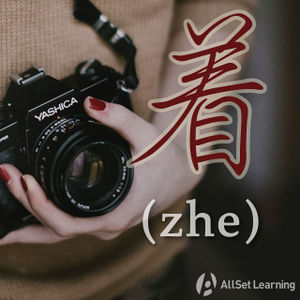Difference between revisions of "Expressing actions in progress (full form)"
| Line 22: | Line 22: | ||
* 她 <em>正在</em> 看 报纸。 | * 她 <em>正在</em> 看 报纸。 | ||
* 她 <em>正</em> 看 报纸 <em>呢</em>。 | * 她 <em>正</em> 看 报纸 <em>呢</em>。 | ||
| − | * 她 <em>正</em> 看 <em>着</em> 报纸 <em>呢</em>。 | + | * 她 <em>正</em> 看 <em>着</em> 报纸 <em>呢</em>。<span class="trans">All these sentences mean "She is reading the newspaper."</span> |
| + | |||
</div> | </div> | ||
| Line 33: | Line 34: | ||
* 我 <em>正在</em> 喝 啤酒 <em>呢</em>。 | * 我 <em>正在</em> 喝 啤酒 <em>呢</em>。 | ||
* 我 <em>正</em> 喝 啤酒 <em>呢</em> | * 我 <em>正</em> 喝 啤酒 <em>呢</em> | ||
| − | * 我 <em>在</em> 喝 <em>着</em> 啤酒。 | + | * 我 <em>在</em> 喝 <em>着</em> 啤酒。<span class="trans">All these sentences mean "I am drinking beer."</span> |
</div> | </div> | ||
| Line 43: | Line 44: | ||
* 我们 <em>正在</em> 学习 中文。 | * 我们 <em>正在</em> 学习 中文。 | ||
* 我们 <em>正</em>学习 中文 <em>呢</em>。 | * 我们 <em>正</em>学习 中文 <em>呢</em>。 | ||
| − | * 我们 学习 <em>着</em> 中文 <em>呢</em>。 | + | * 我们 学习 <em>着</em> 中文 <em>呢</em>。<span class="trans">All these sentences mean "We are studying Chinese."</span> |
</div> | </div> | ||
| Line 54: | Line 55: | ||
* 他们 <em>正</em> 跳 <em>着</em> 舞。 | * 他们 <em>正</em> 跳 <em>着</em> 舞。 | ||
* 他们 跳 <em>着</em> 舞。 | * 他们 跳 <em>着</em> 舞。 | ||
| − | * 他们 跳 <em>着</em> 舞 <em>呢</em>。 | + | * 他们 跳 <em>着</em> 舞 <em>呢</em>。<span class="trans">All these sentences mean "They are dancing."</span> |
</div> | </div> | ||
| Line 77: | Line 78: | ||
[[Category:A2 grammar points]] | [[Category:A2 grammar points]] | ||
| − | {{Basic Grammar|正在| | + | {{Basic Grammar|正在|A2|正在 + V + 着 + 呢|这 件 事情 我 <em>正在 处理 着呢</em>。|grammar point|ASGEYQ9O}} |
{{Rel char|正}} | {{Rel char|正}} | ||
{{Rel char|在}} | {{Rel char|在}} | ||
Revision as of 01:27, 1 February 2013
-
Level
-
Similar to
-
Used for
-
Keywords
You may have learned that 在 (zài) and 正在 (zhèngzài) can be used before verbs to express that an action is ongoing or in progress. They are used to create the Mandarin equivalent of present continuous in English. But that pattern is actually a part of a longer, fuller pattern. It's rarely used in its full form, but bits and pieces of it are frequently used in everyday speech, so it's important to know the full form, even if you don't use it regularly yourself.
Structure
Subject + 正在 + Verb + 着 + Object + 呢
It's important to remember that virtually every part of the above pattern is optional, so you're going to see all sorts of variations of it (and rarely the full form). The most common variation is just the "在 + V" pattern that you probably already learned long ago. Another common variation is "正 + V" pattern.
Examples
Some examples using the verb phrase 看报纸:
- 她 在 看 报纸。
- 她 正在 看 报纸。
- 她 正 看 报纸 呢。
- 她 正 看 着 报纸 呢。All these sentences mean "She is reading the newspaper."
Some examples using the verb phrase 喝啤酒:
- 我 在 喝 啤酒。
- 我 正在 喝 啤酒 呢。
- 我 正 喝 啤酒 呢
- 我 在 喝 着 啤酒。All these sentences mean "I am drinking beer."
Some examples using the verb phrase 学习中文:
- 我们 正在 学习 中文。
- 我们 正学习 中文 呢。
- 我们 学习 着 中文 呢。All these sentences mean "We are studying Chinese."
Some examples using the separable verb 跳舞:
- 他们 正在 跳舞。
- 他们 正 跳 着 舞。
- 他们 跳 着 舞。
- 他们 跳 着 舞 呢。All these sentences mean "They are dancing."
See also
Sources and further reading
Books
- Chinese Grammar Without Tears (简明汉语语法学习手册) (pp. 54-7) →buy
- Common Chinese Patterns 330 (汉语常用格式330例) (pp. 321) →buy
- Mandarin Chinese: A Functional Reference Grammar (pp. 217-26) →buy
- Modern Mandarin Chinese Grammar: A Practical Guide (pp. 216-8) →buy
Websites
- ChinesePod: Qing Wen - The 着 (zhe) Chronicles: Actions in Progress (free podcast content)



